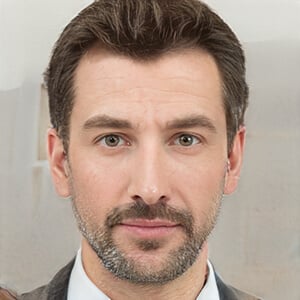Introduction
Computer Fundamentals defines the basic terms and process used for computing purpose. It starts from the very basic data processing along with the Industry and Engineering. It also covers the graphic and multimedia. It acknowledges programming languages and other information of basic logical gates.
Part 1
1. Data Processing
Jason Daley stated that data processing is the method of accumulating and converting data items to fabricate meaningful information. It can also be taken into consideration as a program's information processing subset (Marschner and Shirley, 2015). Data processing can also be termed the combination of certain steps that convert raw data into considerable information through validation, sorting, summarisation, aggregation, analysis, reporting, and classification of the raw data.
Whereas Michael Hiltzik stated that it is an activity which includes data collection. The data that is collected is needed to be stored, followed by sorting of data, further processing, and analysis of it to convert it into information, which is some meaningful data (Iqbal, 2017).
Data processing transforms the raw data into machine-readable data. The continuity in the use and processing of data forms a cycle, which can provide an instant result completely depending upon the need for the processing of data (Monk, 2014).
2. Industry and Engineering
Industry and engineering optimise complex processes, organisations, or systems. It focuses on the elimination of the wastage of time, money, material, hours of every person working, machine time, energy, and resources that are not generating value. It creates processes of engineering and systems that aim to improve quality and productivity (LIU, YANG and LIU, 2017).
It is concerned with the development, improvement, and also implementation of cohesive systems, which include people, money, knowledge, information, equipment, energy, and materials. It also includes analysis and synthesis of the system as well as implementation of the social and physical sciences with the help of principles and other methods of engineering design for the specification, prediction and evaluation of the result obtained (Raphael and Smith, 2018). It is also a business-orientated discipline, which includes the management of the operations.
3. Graphics and Multimedia
Graphics can be defined as images or designs that are visual on some surface, which can be canvas, paper, or screen, whose purpose is to inform, entertain, or illustrate something. The contemporary usage of graphic design involves the representation of data in the pictorial format. The images that are generated through computers are known as computer graphics. It may be comprised of functional or artistic aspects. Graphics are the visual elements which point certain information to the readers or the viewers (Beriswill, 2015). Graphics is one of the important aspects of the elements of multimedia technology. It is also used as one of the primary way of advertisement.
Multimedia is content that uses different forms of content and makes their combination, such as text, video audio, and animations, or content that is interactive. Recording of multimedia can be done along with playing and displaying, which is interacted or displayed by devices that process informative content, like computerised and electronic devices.
Multimedia can be stored on multimedia-storing devices only. Multimedia is used in many aspects, such as for the formation of presentations, games, and simulations. It can be used in many fields, such as advertisement, education, scientific research, and creative fields (Lin et. al., 2015).
Part 2
1. Need for Programming Language
The main need of programming languages is to write programme processing messages for the development of the software in an easy way that works efficiently. programmer is being provided the proper environment for the programming through the programming language.
It develops the ability of a programmer to develop the real algorithm. As programming languages come with certain features that, if used properly, can give a better result. Programming language gives the software developer an option to customise his programming language. Due to this, the developer can simplify things for the better; hence, helping him towards the resourceful improvement code concept. Also, the precision may not come in the human language to express algorithms (Vercauteren, Cuinas and Verhaevert, 2015).
2. Differentiation of high-level and low-level languages
- The high-level language can be easily understood by the humans, whereas the low-level language cannot be easily understood by humans (Kasemsap, 2018).
- High-level languages can be easily learnt, whereas low-level languages are not at all easy to learn.
- Execution of high-level language is slow, whereas execution of low-level language is fast.
- Modification of high-level languages can be easily done but for low-level languages, modification is not easy.
- High-level language is normally used for writing application programs, whereas low-level language is used for writing hardware programs.
3. Differentiate between a compiler and an interpreter and give two examples of each.
- One statement at a time is translated by the interpreter, whereas the compiler translates the entire program at a time only (Logunov, Shmotin, and Danilo, 2015).
- The execution time is more and the analysis time of the interpreter is less, whereas the compiler takes more time for analysis of the source code; also, the execution time is less.
- Memory of the interpreter is efficient as there is no generation of intermediate code, whereas the compiler requires more memory as it generates the intermediate code.
- Programming languages like Python and Ruby use the interpreter, whereas compilers are used by languages like C and C++.
Part 3
1. Describe logical operators.
Logical operators are used for the combination of two or more phrases of information.
Logical operators are special symbol. It is used for the test of the relationship between the two phrases of information, whether it is true or false (Vercauteren, Cuinas, and Verhaevert, 2015).
Logical operations are important because they are used to control the path of flow of the information in the electrical circuits, for example, inside the CPU. The operations which are performed are known as Boolean Operations. The elements of the circuits that behave according to the logic of boolean are known as logic gates. There are three types of logical operators in C language. They can be logical AND (&&), logical OR (||), and logical NOT (!).
- The logical AND (&&) returns the value true when both the conditions are true; otherwise, it will not return any value, for example (x>2) && (y<2).
- The logical OR ( | | ) returns the value true when at least one of the given condition is true for example, (x>=2) | | (y>=2)
- The logical NOT (!) The function of this logical operator is to reverse the state of the operand, for example! ((x>2) && (y<2)) will be reversed to "((x>2) && (y<2))," and otherwise, if the condition is true, the logical NOT operator makes it false.
2. Identify the basic gates and describe the behaviour of each.
There are three basic gates which are:
- AND
- OR
- NOT
AND Gate: It is a logic gate with many inputs and one output. The output of the gate is true when the provided inputs are true altogether. If any of the input is false, the output of the AND gate is also false.
Truth Table for the input of AND Gate
|
A |
B |
O/P |
|
0 |
0 |
0 |
|
0 |
1 |
0 |
|
1 |
0 |
0 |
|
1 |
1 |
1 |
OR Gate: It is a logic gate with n inputs and one output that performs the logical combination of the inputs. The output of the OR gate is true when one or more than one input is true. The false outcome is only possible when all the inputs are false.
Truth Table for the input of OR Gate
|
A |
B |
O/P |
|
0 |
0 |
0 |
|
0 |
1 |
1 |
|
1 |
0 |
1 |
|
1 |
1 |
1 |
NOT Gate: This gate has one input and one output. The output of this gate is always the reverse of the input provided.
Truth Table for the input of NOT Gate
|
A |
O/P |
|
0 |
1 |
|
1 |
0 |
3. Combine basic gates into circuits
The circuit is the combination of the basic gates, which are also known as decision-making circuits. The basic gates are combined in the above diagram where A, B, and C are the inputs provided to the NAND gate and NOR gate, respectively (Kasemsap, 2018) . The output of the first NAND gate will be NOT of (A.B), whereas the output of the NOR gate will be NOT of (A+B). The output of these two gates will be the input of the other AND gate along with the input C .The boolean Expression of the output is written in the diagram along with the truth table.
Few More Samples-
4. Describe the behaviour of a gate or circuit using Boolean expressions, truth tables and logic diagrams.
The behaviour of the three basic gates are as follows:
AND Gate: The Expression for the AND gate is (A.B). The outcome will be true only if all the inputs are true.
The diagram for the AND Gate is
Truth Table for the input of AND Gate
|
A |
B |
O/P |
|
0 |
0 |
0 |
|
0 |
1 |
0 |
|
1 |
0 |
0 |
|
1 |
1 |
1 |
OR Gate: The OR Gate has the boolean expression of (A+B). The OR gate produces the true if one of the provided input is true.
The diagram for the OR gate is
Truth Table for the input of OR Gate
|
A |
B |
O/P |
|
0 |
0 |
0 |
|
0 |
1 |
1 |
|
1 |
0 |
1 |
|
1 |
1 |
1 |
NOT Gate: The NOT gate produces the reverse output of the inputs.
The diagram for the NOT gate is
Truth Table for the input of NOT Gate
|
A |
Z |
|
0 |
1 |
|
1 |
0 |
Conclusion
It can be concluded that data processing is an important part of converting data into information, along with the information of the graphics and media; with the importance of the industry and engineering. Programming language is important and needed by every programmer for ease. The interpreter and compiler have certain differences along with the complete working of the basic logic gates and their combinational circuits, which included the boolean expression, their truth table, and the diagrams, and also how they control the flow of information in the circuit.
References
- Beriswill, J.E., 2015. Design Process of a Goal-Based Scenario on Computing Fundamentals. TechTrends. 59(6).pp.15-20.
- Iqbal, A., 2017. Computer Fundamentals MCQs: Multiple Choice Questions and Answers (Quiz & Tests with Answer Keys).
- Kasemsap, K., 2018. The fundamentals of human-computer interaction. In Encyclopaedia of Information Science and Technology, Fourth Edition, pp. 4199-4209. IGI Global.
- Lin, Y.P., et. al., 2015. Towards Affective Brain-Computer Interface: Fundamentals and Analysis of EEG-Based Emotion Classification. Emotion Recognition: A Pattern Analysis Approach. pp. 315-341.
- LIU, P.P., Yang, S.Q., and LIU, B.L., 2017. Exploration on the Reform of Multi-Resource Construction of Computer Fundamentals in MOOC. Value Engineering. 20. pp. 092.
- Logunov, A.V., Shmotin, Y.N., and Danilov, D.V., 2015. Methodological fundamentals of computer-assisted designing of nickel-based superalloys. Russian Metallurgy (Metally). 2015(13). pp. 1053-1059.
- Marschner, S., and Shirley, P., 2015. Fundamentals of computer graphics. CRC Press.
- Monk, A.F. ed., 2014. Fundamentals of human-computer interaction. Academic Press.
- Raphael, B. and Smith, I.F.C., 2018. Teaching Fundamentals of Computing to Civil Engineers: Challenges and Solutions. In Transforming Engineering Education: Innovative Computer-Mediated Learning Technologies, pp. 25-42.


 Company
Company














